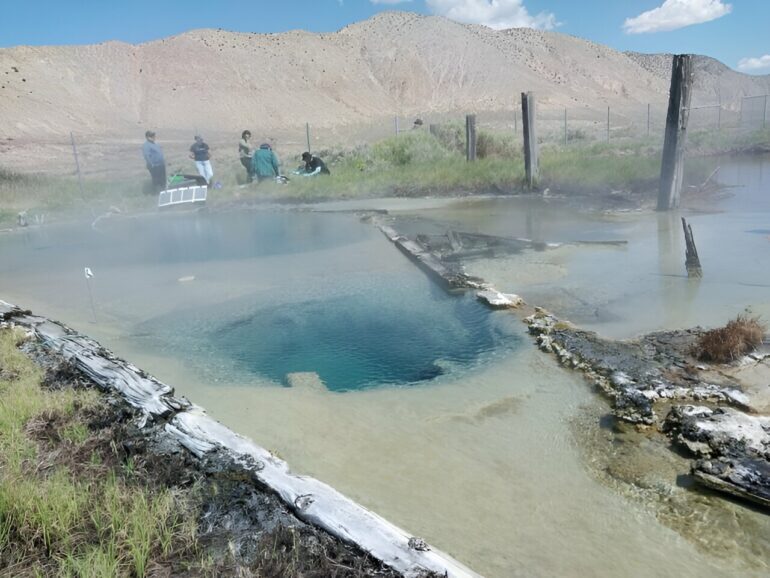Scientists have discovered flagella in an unexpected place: hot spring-dwelling bacteria from the phylum Chloroflexota. Research shows that flagella were lost in other forms of Chloroflexota that adapted to marine environments hundreds of millions of years ago.
Chloroflexota are bacteria that act like tiny natural engineers with special skills to break down pollutants and recycle carbon. They were part of an ancient lineage of bacteria to migrate from oceans and colonize land. Terrestrial Chloroflexota have certain traits that most marine Chloroflexota lost when they returned to an ocean home.
A deeper understanding of how these bacteria evolved could help inform engineering microorganisms for biofuel production and other sustainable applications.
Hot springs are environments of extremes, where both temperatures and pH levels vary wildly from spring to spring. These biodiversity hotspots harbor specialized microbial communities living in extreme conditions. The microorganisms found there utilize a unique array of chemicals not typically found in oceans or soils.
A study published in The ISME Journal focused on a class within Chloroflexota called Dehalococcoidia. Some Dehalococcoidia have a knack for degrading the kind of harmful chemicals found in pesticides and refrigerants. Researchers found a number of surprising traits in Dehalococcoidia inhabiting hot springs. Some of those traits vanished in bacteria that evolved to inhabit marine environments, while echoes of others remain.
Until now, Chloroflexota had not been known to produce flagella—propeller-like structures that enable organisms to swim around. However, genome and metagenomic sequencing conducted by the U.S. Department of Energy Joint Genome Institute, a DOE Office of Science User Facility at Lawrence Berkeley National Laboratory, has unveiled these motility tools in hot spring Chloroflexota.
Ocean-dwelling Dehalococcoidia don’t have flagella, meaning they were lost in the evolutionary adaptation to marine environments. These bacteria are so small, it’s possible flagella would be a liability in open water—requiring more energy for the bacteria to orient and swim than they would gain by pursuing nutrients and other resources in the open oceans.
Other surprises in the research include a similar loss of cell walls and a complex pattern of evolution for genes related to eating plant compounds in both the oceanic and hot spring Dehalococcoidia. Since these bacteria lack complete biochemical pathways to break down plant material on their own, they likely cooperate with other microorganisms in their community to do so.
In addition, scientists noted that the bacteria have enzymes to synthesize or degrade plant hormones, meaning its land-dwelling counterparts could have the ability to manipulate plant growth.
Across the phylum, diverse Chloroflexota show the ability to respire with or without oxygen, fix nitrogen, and break down organic and inorganic compounds. Studying their diverse metabolic capabilities offer insights into how microbial processes might be harnessed for applications including biofuel production.
More information:
Marike Palmer et al, Thermophilic Dehalococcoidia with unusual traits shed light on an unexpected past, The ISME Journal (2023). DOI: 10.1038/s41396-023-01405-0
Provided by
DOE/Joint Genome Institute
Citation:
New research finds marine bacteria ditched their flagella and other traits when migrating back to the ocean (2023, October 20)


